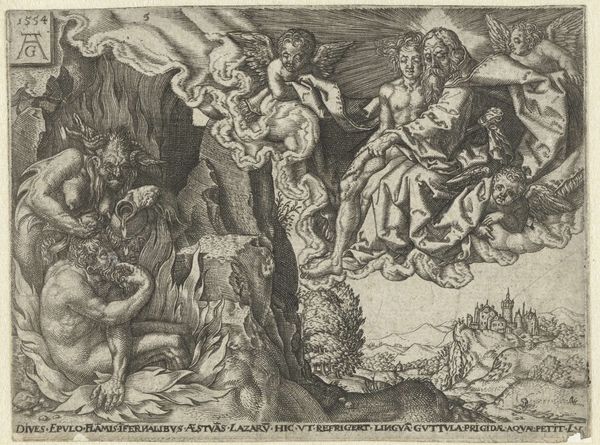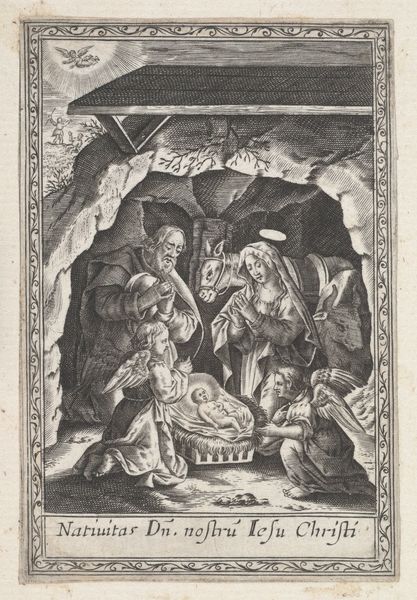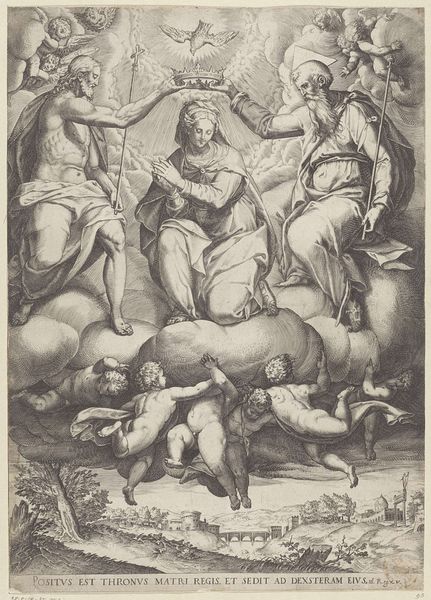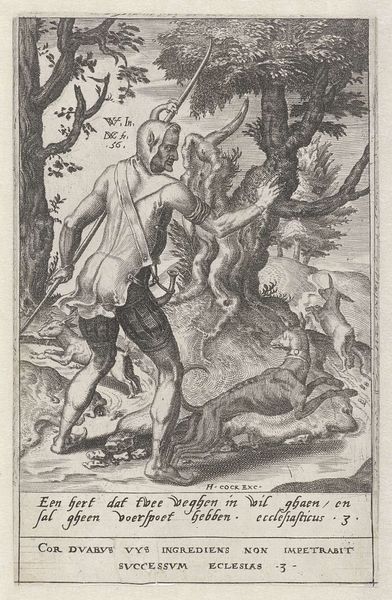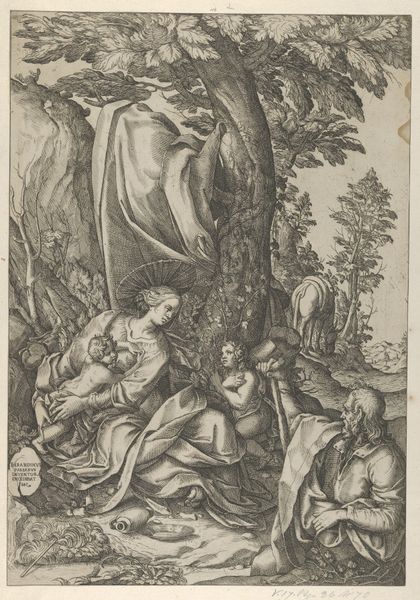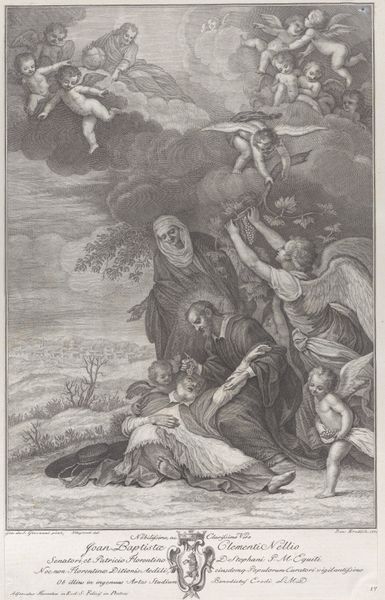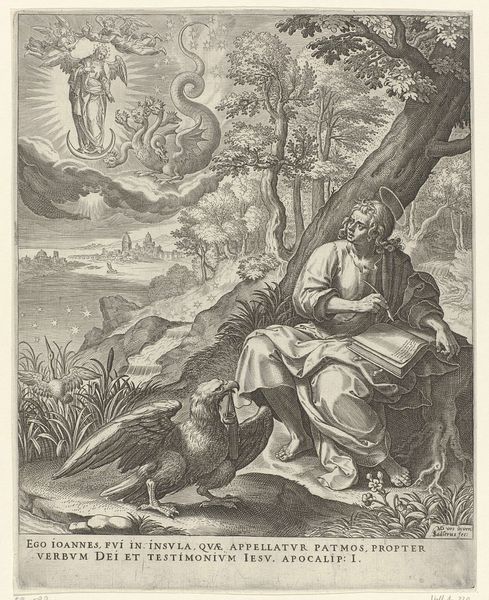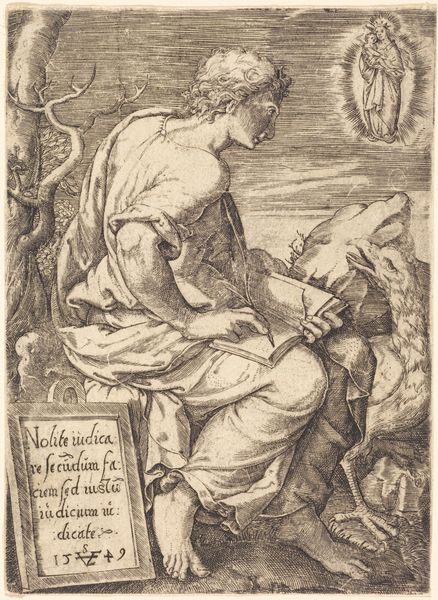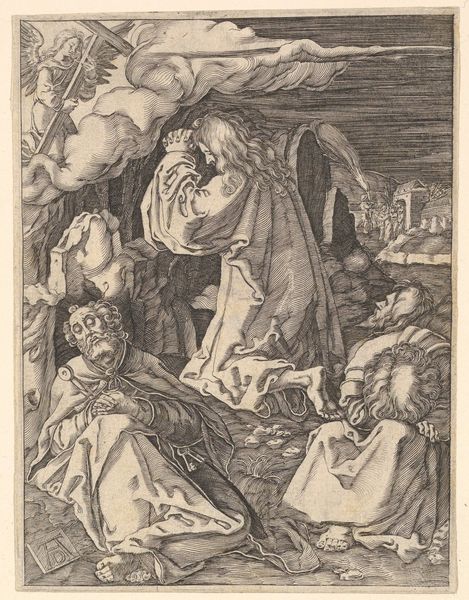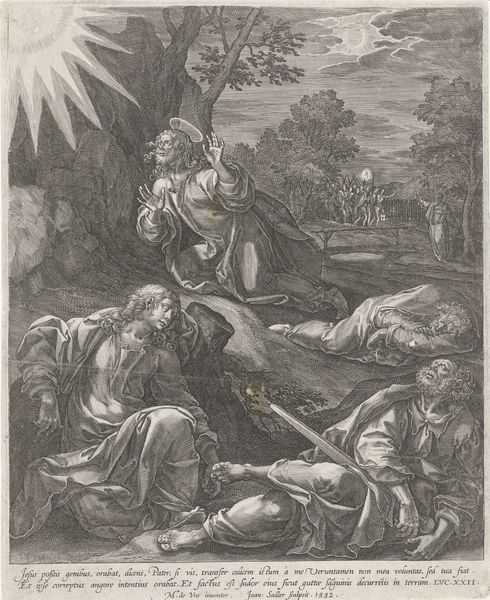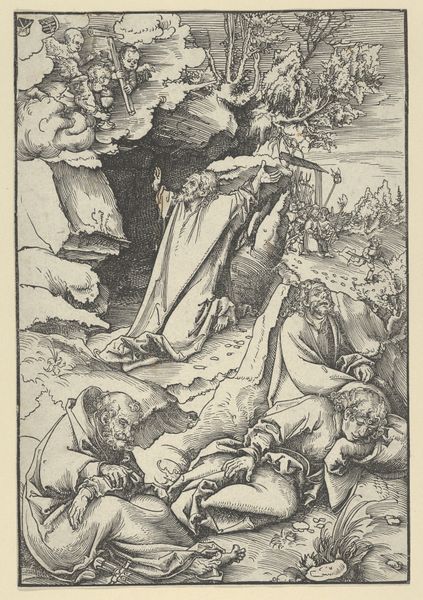
drawing, print, ink, engraving
#
drawing
#
narrative-art
#
pen drawing
# print
#
mannerism
#
figuration
#
ink
#
history-painting
#
engraving
Dimensions: height 101 mm, width 85 mm
Copyright: Rijks Museum: Open Domain
Curator: What a dramatic scene! This engraving, "Death of Elizabeth," likely created between 1580 and 1600, is attributed to Jacob de Weert and showcases an event from religious history. I’m struck by its visual complexity and use of ink to build depth and shadow. Editor: Wow, it feels like a dream...or a nightmare! All those stark contrasts create a world teetering between divine intervention and stark human drama. That old woman collapsing, that chubby baby clinging to an angel... It’s quite theatrical. Curator: It is. The printmaking process allowed for the relatively efficient reproduction of intricate designs for consumption across a wider audience. And consider the labor—the highly skilled craftspeople using specialized tools to transfer these devotional images. It underscores the intersection of art, commerce, and religion in the period. The Mannerist style contributes to the elongated figures and almost claustrophobic composition. Editor: Yes, claustrophobic is right! Elizabeth looks almost trapped, her despair is palpable, but then the angel’s intervention… I imagine it offering solace. Angels are always nice to have on standby in trying times! You mentioned commerce – did ordinary people really buy these? Imagine hanging death on your living room wall! A bit morbid? Curator: Not necessarily morbid; reminders of mortality were much more commonplace, and engravings served various purposes – devotional aids, educational tools, and interior decoration. Looking at how meticulously De Weert renders the angel's wings, each feather so precisely delineated – it really highlights the skill involved, especially given the scale of the work. The text printed below the image provides context for those who might be unfamiliar with the story. Editor: Context! Good point. Without the historical tale, the angel, baby, and forest become more mysterious… more like a twisted fairytale. But learning about these details really fleshes out what I see. Before I just noticed some interesting lines but now it connects on a whole new level for me. Curator: Precisely! And the printmaking enabled a distribution, and therefore access, far wider than if the image had only existed as painting. That access and those tools deeply influence subject and style of art from then on. Editor: Indeed, knowing a little about that opens this little scene up in a really profound way, now I feel a part of its world and history.
Comments
No comments
Be the first to comment and join the conversation on the ultimate creative platform.


